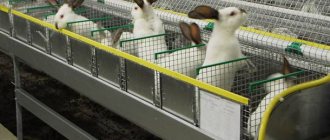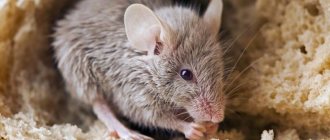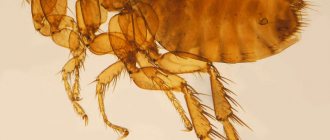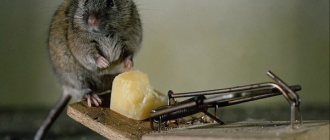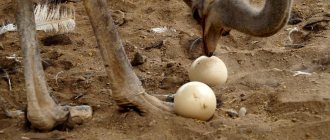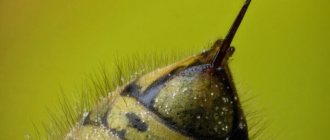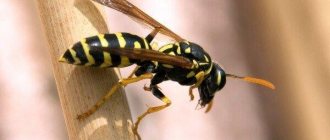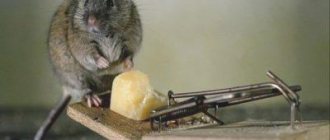Not only breeders, but also rodent fighters need to know how mice reproduce and how long they live. Cute domestic animals and terrifying street dwellers, under favorable conditions, are able to reproduce all year round.
Only at sub-zero temperatures does the female stop estrus and the males are not interested in her. An individual gives birth to about 10 cubs at a time, and the next litter may appear 1-2 months after the previous one.
During this period, the babies grow up and are able to become fertilized themselves.
What affects the reproduction of mice
In the wild, the reproduction of a house mouse can only be affected by external factors, such as cold, hunger and other weather disasters, because a pregnant female must eat well, be warm and safe, which is impossible to create in such extreme conditions. But you shouldn’t assume that it’s easier to get offspring from rodents at home. There are a lot of nuances, without which it will not be possible to breed beautiful, ornamental animals. In order to achieve the desired result when breeding mice, you should choose the right male and female.
When selecting them, the following is assessed:
- fertility;
- color and general condition of the coat;
- body type;
- weight.
For mating, you should not choose aggressive animals, as well as females that eat their offspring. The main thing is that the couple is healthy. The female is moderately well-fed, with shiny, silky hair; her ability to produce milk is also assessed based on previous births. The male must be larger than his partner and have a dense build. His coat is beautiful, even in color and shiny.
Important! Obese mice, as a rule, cannot bear offspring for a long time, so before mating they must be kept on a special diet and their physical activity increased.
Selection, preparation, rules of use for future parents
Successful reproduction largely depends on the correct selection of a pair. All candidates are carefully assessed, analyzing:
- constitution and physique;
- fatness;
- quality of the fur coat;
- fertility if mice have already been bred.
Both the female and the male must be strong, outwardly healthy, well-fed, but not obese.
If the female has already given birth, then the best is considered the one that:
- was a wonderful mother;
- brought an average number of mice;
- had a high lactation rate.
Animals that have a history of eating their offspring or animals that suffer from excessive aggression should not be allowed into breeding.
The female can be used no more than twice during the year.
Frequent childbirth significantly undermines health, and an unrestored body is unlikely to be able to provide future offspring with everything necessary for full development. Thus, it was noticed that the cubs of females who had exhausted their strength were born weak, developed poorly and died prematurely.
Males are also used wisely: frequent mating depletes reproductive function and the mouse may simply remain unfertilized.
Before mating, animals are provided with complete feeding with a sufficient amount of vitamins (especially E) and microelements.
Obese rodents, which most often turn out to be temporarily infertile, are forced to move as much as possible, and foods rich in carbohydrates are excluded from their diet.
There should be no more than ten females per male. They can be kept all together, but it is better to place each animal in its own cage, placing the females with the male as needed at the time of estrus.
When can a mouse give birth?
Sexual maturity in female rodents occurs quickly, on the 30–35th day of existence. But at home, the first mating should occur no earlier than the 12th week of life, then the reproductive qualities of the mouse will be of better quality. Males reach sexual maturity when the testes move into the scrotum, usually at 5–7 weeks. It is this factor that indicates that the animal is ready to reproduce.
Cubs
Mice are born naked, blind, deaf, with undeveloped limbs. But they have an excellent appetite, and significant changes occur daily in physical development:
- in a week they are already cute fluffy creatures;
- after 14 days, hearing appears and the eyes open;
- At 3 weeks of life, the mice crawl out of the nest and explore the space.
It is not recommended to pick up small babies, as the mouse may refuse them. But from the 20th day of life, this must be done so that the mouse grows tame. At 30 days, the offspring become independent and can be given to other hands.
Mice reproduce quickly; under comfortable conditions, the process can continue continuously. But the female spends a lot of energy on feeding the mice, pregnancy, and childbirth. Therefore, the higher the birth rate, the weaker the health of the adult.
Sexual cycle of mice
The readiness of a female to mate can be determined by the presence of estrus, the phase of which is determined by taking a smear from the genital organ. The cycle in mice is 3–9 days.
In the wild, a female can give birth up to 14 times a year. But at home, in order to get high-quality offspring, it is necessary to mate 7–9 times a year. With more frequent pregnancies, the female becomes exhausted and can give birth to weak mice that will soon die.
Important! When optimal conditions are created, rodents can give birth at any time of the year. But in order to exclude unplanned reproduction when keeping one pair of animals, they are seated in different cages and placed next to each other only for mating.
Development of little mice
Newborn babies, similar to rat pups, develop very quickly: after only two to four days the first fluff appears on their bodies, their ears open, after another two days they confidently hold their heads at a distance from the floor and stand up straight, and after another two days they begin to cut themselves teeth. Then, on the thirteenth day, the eyes open and vision clears. On the fourteenth day, they complete the development of motor functions, they can move around and eat food that adults eat. After a month, they begin to live separately from their parents, the female no longer cares about them .
If the mice are decorative, at the beginning of the first month they need to be placed in different cages according to gender, so that subsequent mouse pairs will not be blood relatives. In wild mice there is no such separation, so incest is a common occurrence among them.
How does mating happen?
Males show special interest in females during estrus. You can notice the moment when a representative of the fairer sex is ready for mating by such signs as: tranquility, characteristic arching of the back, spreading of the hind limbs. So that animals can continue the race, they are placed in the same cage. Mice can mate at any time of the day, so there is no need to choose a special moment.
After copulation, the female is placed in a separate cage. After 2 hours, she is again sent to the same male for re-covering. Next, the female mouse is observed until the expected next estrus; if it does not occur, it means that fertilization was successful.
Offspring
The health of the offspring depends on the quality of the female’s nutrition during pregnancy and the interval between matings. At birth, babies do not see or hear anything, they have no fur, but they have a good appetite. Each weighs no more than 1.5 g.
After a week, you can see grown hair on the animals’ bodies, and the first incisors of the lower jaw appear in the mouth. By 14 days of age, a baby mouse can already see and hear.
Females have noticeable nipples from childhood. In males, the testicles move from the abdominal cavity to the scrotum only in the second week. It is after this that the gender of the offspring can be understood.
A wild litter is not the same as that of a domestic mouse. It develops faster. If indoor rodents are picked up prematurely, the mother may abandon them.
Therefore, offspring can be accustomed to human attention after three weeks, when rodents leave the nest in search of new horizons.
Month-old indoor animals can be given to other people for new families. At this age, they are unlikely to eat their mother's milk. And they switch to adult food and become completely independent.
Video
The mouse has given birth! What to do ?
How is pregnancy going?
The first sign of pregnancy in a mouse, of course, will be the absence of another heat. Also, the female may change in behavior, become more aggressive or, conversely, more affectionate. Her movements will become smoother and more measured.
Did you know? The baby mouse reaches a length of only 5 cm and is rightfully considered the smallest representative of the mouse species.
Signs of toxicosis may also be observed:
- apathy;
- refusal of food;
- convulsions;
- drooping eyelids;
- dullness of fur.
In this case, you should offer the mouse more drinks and favorite foods, make the conditions in the cage and room comfortable, and eliminate all kinds of stressful situations. The room should have a comfortable humidity of up to 70% and a temperature from +18°C to +20°C. The room should be ventilated 2 times a day, but avoid drafts, which can lead to colds.
You should not pick up a pregnant female without reason. When carrying out a daily walk around the room, you need to follow safety precautions and prevent the mouse from falling from a height or coming into contact with electrical appliances; the mouse should not walk where it can meet other pets or small children, who, while playing, can harm the animal.
Normally, pregnancy in a rodent lasts from 19 to 26 days. The average number of days before birth is 22 days, it is during this period that labor should begin, so you should prepare in advance a special house for the mouse in which it will care for newborns. Throughout pregnancy, you need to ensure that your pet's diet is balanced.
Description of the rodent
Animals of this species are very tiny compared to rats. The body of an adult mouse reaches only 6.5-9.5 cm in length. The tail of a rodent is almost half as long as the body. It is covered with scales and small sparse hairs.
The average weight of an adult is only 12 to 30 grams. The ears are small and rounded. The color is predominantly dark, brownish-gray. On the belly, the fur is lighter and colored ash-gray or white.
Are you afraid of mice?
Very Not a drop
Habitat
The most ancient remains of a mouse were found in Western Asia, North Africa and the northern regions of India.
Traveling with people on ships, mice quickly spread throughout the world and received the status of “cosmopolitan animal.”
Childbirth
Mostly, mice are born at night, from midnight to 4 am or in the evening - from 18:00 to 22:00. The process of giving birth to offspring almost always goes smoothly and easily. Its duration is approximately 120 minutes. When the female gives birth, the male can be left in the cage, he will take care of the offspring, licking and covering the newborn mice.
Find out also how to name a mouse.
But during childbirth, complications can also occur that can lead to the death of the offspring or the mouse itself, so a person who wants to breed mice needs to know what symptoms should promptly call a veterinarian:
- if contractions have lasted more than 15 minutes, but labor has not begun;
- After the birth of one mouse, more than an hour has passed, and the next cubs do not appear.
